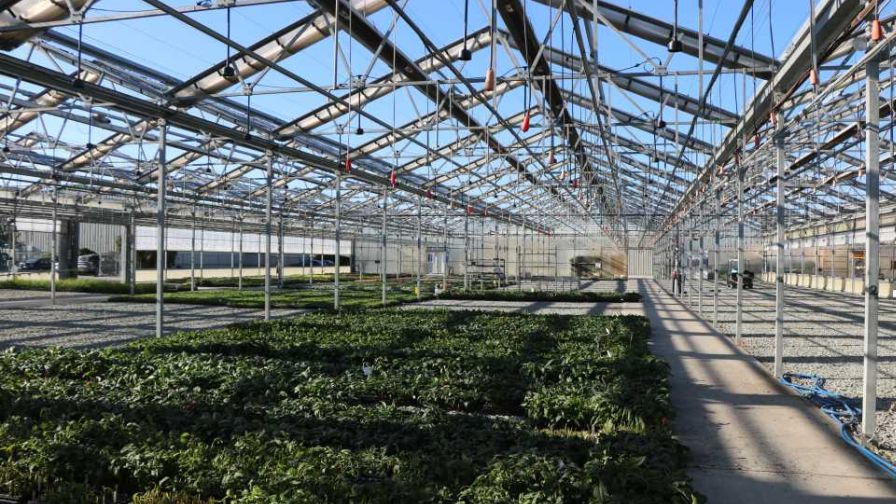Computer Vision in the Greenhouse Is No Longer in the Future; It’s Here
Computer-based technology is becoming increasingly commonplace and sophisticated in the world of horticulture and agriculture. Sensor technology has long assisted greenhouse growers in monitoring and controlling their production ranges, even up to making automatic decisions regarding climate control actions. Recent advancements in artificial intelligence (AI) and computer vision are taking these capabilities to the next level in greenhouses and fields across the globe, but the journey to get here started many decades ago.
Beginning all the way back in the 1960s, computer scientists started by digitizing images, and the race to develop an artificial intelligence to process image data was on. Organized images such as text, road signs, and human architecture tend to be simpler for computers to process and recognize than organic shapes that vary widely in their appearance. By 2001, computers could not only identify human faces in real-time, but recognize differences between them. Since then, computer scientists have developed large image “training libraries” for computers to recognize objects of all types, including a multitude of plants.
Getting computers to recognize plants in one thing, but how is that valuable to the green industry? Farmers and horticulturists often make climate control and crop management decisions based on visual information. Identification of weeds to be plucked, fruits to be harvested, superficial leaf damages to be assessed, and insect invaders have all historically required human eyes to judge. Special training is required to teach artificial intelligence algorithms to identify new objects.
AI programs can be trained to recognize things such as insect infestations, new damage to foliage, different types of damage and diseases, new and developing growth of foliage, differentiated plant structures such as fruits and flowers over leaves, and more. The process of training allows for human feedback. Using a database of relevant images, human technicians manually tag images with keywords and descriptions to tell the AI software what each image contains. This process ensures that the AI is as accurate as possible.
Farmers and horticulturists have been manually recording crop and environmental data forever, but in-depth computer-based image analysis was not available to most.
“This is a new source of data, taken comprehensively across the entire greenhouse,” says Allison Kopf, Chief Growth Officer at computer vision company IUNU. IUNU has developed LUNA AI, an image capture and analysis platform to take in visual data from the crop and integrate it with environmental information. This gives growers access to an automatic, detailed analysis of crop health and progress.
 But how are these images captured? LUNA AI and other systems can gather crop imagery in different ways, but some basic requirements are universal. Image data must be very high resolution in order to capture relevant information and reveal problems as early as possible. Imagine trying to spot thrips on a leaf in an image taken with a cellphone camera from 10 feet away – the thrips might take up a single pixel or be completely invisible. Identifying features are often lost with low quality images. Higher resolution cameras offer large images sizes to capture small details from appropriate mounting distances, enabling the early detection and identification of various diseases and insects.
But how are these images captured? LUNA AI and other systems can gather crop imagery in different ways, but some basic requirements are universal. Image data must be very high resolution in order to capture relevant information and reveal problems as early as possible. Imagine trying to spot thrips on a leaf in an image taken with a cellphone camera from 10 feet away – the thrips might take up a single pixel or be completely invisible. Identifying features are often lost with low quality images. Higher resolution cameras offer large images sizes to capture small details from appropriate mounting distances, enabling the early detection and identification of various diseases and insects.
Most high-resolution cameras can take pictures in the visible spectrum, and the vast majority of reference images and research focuses on how various insects, diseases, and plant anatomy looks under visible light. While some cameras can capture images with infrared or ultraviolet light, this data can be more difficult to utilize. Not only do those cameras or filters cost more, but less research exists on how to interpret signs and symptoms in those spectra. To give one example, flowers can appear radically different when viewed under ultraviolet light, but this data may not contribute any actionable knowledge.
 The actual physical set up of image capture can take several forms. Beyond spectrum choices, cameras can be set up to capture images from dynamic or static positions. A camera in a static position can gather continuous information on the same portion of a greenhouse or crop canopy, improving its ability to recognize day to day changes. Cameras mounted in dynamic positions pass over the entire crop canopy throughout the day to gather daily crop updates. The best choice for each production will depend on a number of factors, such as crops grown, size of growing area, activity levels, and more.
The actual physical set up of image capture can take several forms. Beyond spectrum choices, cameras can be set up to capture images from dynamic or static positions. A camera in a static position can gather continuous information on the same portion of a greenhouse or crop canopy, improving its ability to recognize day to day changes. Cameras mounted in dynamic positions pass over the entire crop canopy throughout the day to gather daily crop updates. The best choice for each production will depend on a number of factors, such as crops grown, size of growing area, activity levels, and more.
AI provides several concrete areas of value for growers, each building on each other. Using computer vision and AI, inventory tracking can be automated, with counts and location tracking happening behind the scenes. Automated counting is one area where machines consistently outperform humans; it can be difficult to maintain the attention and focus required for simple, repetitive tasks that need high accuracy. With accurate inventory tracking and integration into automated data collection systems, accurate growth metrics can be recorded over time. Hand-written records can be lost or inaccurate, and gaps in records can occur with worker turnover or labor availability. Utilizing an automated system takes yet another task from human workers and frees them up for other equally important work. Issue detection can also be automated with a well-trained AI, enabling growers to detect the first signs of disease, insect, or culturally caused damages earlier and more consistently than human scout. With accurate and detailed records, better forecasting of crop performance is achievable.
Any degree of automation, from the addition of simple sensors up to image processing artificial intelligences, brings real value through labor savings to growers of all types. Computer vision and artificial intelligence have finally reached a place where their applications are more accessible to growers. Currently, their capabilities fall under the umbrella of data gathering and diagnostics; in the future, these capabilities will lead closer and closer to fully autonomous systems. It is an exciting time for the fields of horticulture and computer science.










